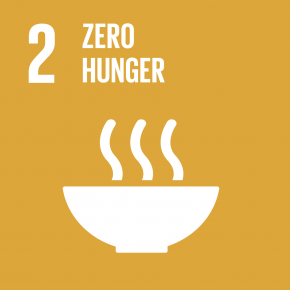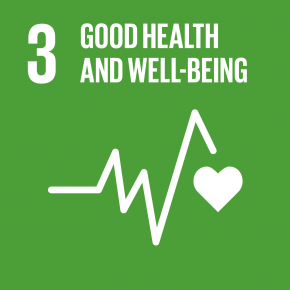|
Title |
Associate Professor |
|
Researcher Number(JSPS Kakenhi) |
50610846 |
|
|
|
ITO Sanae
|
|
|
Current Affiliation Organization 【 display / non-display 】
-
Duty University of the Ryukyus Faculty of Medicine Health Sciences Associate Professor
-
Concurrently University of the Ryukyus Graduate School of Health Sciences Division of Health Sciences Associate Professor
University 【 display / non-display 】
-
2001.04-2003.03
The University of Tokyo Faculty of Agriculture Graduated
-
2005.04-2008.03
Kagawa Nutrition University Faculty of Nutrition Graduated
Graduate School 【 display / non-display 】
-
2003.04-2005.03
The University of Tokyo Master's Course Completed
-
2008.04-2011.03
Kagawa Nutrition University Graduate School, Division of Nutrition Doctor's Course (second term) Completed
External Career 【 display / non-display 】
-
2011.04-2018.03
Kagawa Nutrition University
-
2018.04-2020.03
University of the Ryukyus
-
2020.04
Japan Society for the Promotion of Science
-
2020.04
University of the Ryukyus
Affiliated academic organizations 【 display / non-display 】
-
JAPAN EPIDEMIOLOGICAL ASSOCIATION
-
THE JAPANESE SOCIETY OF CHILD HEALTH
-
Japanese Society of Nutrition and Foodservice Management
-
THE JAPANESE SOCIETY OF HEALTH AND HUMAN ECOLOGY
Research Interests 【 display / non-display 】
-
食生活
-
食事摂取基準
-
母子栄養
-
応用栄養学
-
ライフステージ栄養学
Research Areas 【 display / non-display 】
-
Life Science / Nutrition science and health science
-
Others / Others
Acquisition of a qualification 【 display / non-display 】
-
Administrative Dietitian
Published Papers 【 display / non-display 】
-
Evaluation of the relationship between household economic situation and food group intake in children attending nursery school
SAKAI Atsuki, YOSHITA Katsushi, TAKAHASHI Takako, OKABE Tetsuko, SASAKI Ruriko, ISHIDA Hiromi, OGATA Hiromitsu, HARA Mitsuhiko, YOSHIOKA Yukiko, NOZUE Miho, SAKAMOTO Tatsuaki, ITO Sanae, MURAYAMA Nobuko
Nihon Koshu Eisei Zasshi(JAPANESE JOURNAL OF PUBLIC HEALTH) ( Japanese Society of Public Health ) 71 ( 4 ) 220 - 230 2024.04 [ Peer Review Accepted ]
Type of publication: Research paper (scientific journal)
-
Access this article
-
-
Association between sodium and potassium excretion estimated from spot urine and socioeconomic status among primary school children and their mothers in Okinawa, Japan
Sanae Ito, Keiko Asakura, Kemmyo Sugiyama, Minoru Takakura, Hidemi Todoriki
Hypertension Research 2024.01 [ Peer Review Accepted ]
Type of publication: Research paper (scientific journal)
-
Access this article
-
-
Evaluation of Habitual Energy and Nutrient Intake in Children Attending Nursery Schools
Sakai Atsuki, Yoshita Katsushi, Takahashi Takako, Okabe Tetsuko, Sasaki Ruriko, Ishida Hiromi, Ogata Hiromitsu, Abe Aya, Hara Mitsuhiko, Yoshioka Yukiko, Nozue Miho, Sakamoto Tatsuaki, Ito Sanae, Murayama Nobuko
Nippon Eiyo Shokuryo Gakkaishi ( Japan Society of Nutrition and Food Science ) 76 ( 1 ) 33 - 41 2023.02 [ Peer Review Accepted ]
Type of publication: Research paper (scientific journal)
-
Access this article
-
-
Status of Nutrition Management in Childcare Centers Based on Whether They Qualify to Receive Nutrition Subsidies
Nozue Miho, Ishida Hiromi, Yoshita Katsushi, Hara Mitsuhiko, Ogata Hiromitsu, Okabe Tetsuko, Yoshioka Yukiko, Takahashi Takako, Sakamoto Tatsuaki, Sasaki Ruriko, Ito Sanae, Murayama Nobuko
The Japanese Journal of Nutrition and Dietetics ( The Japanese Society of Nutrition and Dietetics ) 81 ( 1 ) 31 - 39 2023.02 [ Peer Review Accepted ]
Type of publication: Research paper (scientific journal)
-
Access this article
-
-
Sanae Ito, Kensaku Takara, Kaori Shiroma, Chikako Namihira, Hidemi Todoriki
Journal of Nutritional Science and Vitaminology ( Center for Academic Publications Japan ) 67 ( 2 ) 139 - 142 2021.04 [ Peer Review Accepted ]
Type of publication: Research paper (scientific journal)
-
Access this article
-
Grant-in-Aid for Scientific Research 【 display / non-display 】
-
Grant-in-Aid for Scientific Research(C)
Project Year: 2024.04 - 2027.03
Direct: 3,300,000 (YEN) Overheads: 4,290,000 (YEN) Total: 990,000 (YEN)
-
Grant-in-Aid for Scientific Research(C)
Project Year: 2024.04 - 2027.03
Direct: 3,500,000 (YEN) Overheads: 4,550,000 (YEN) Total: 1,050,000 (YEN)
-
Grant-in-Aid for Scientific Research(C)
Project Year: 2021.04 - 2024.03
Direct: 3,100,000 (YEN) Overheads: 4,030,000 (YEN) Total: 930,000 (YEN)
-
Grant-in-Aid for Scientific Research(C)
Project Year: 2021.04 - 2024.03
Direct: 3,200,000 (YEN) Overheads: 4,160,000 (YEN) Total: 960,000 (YEN)
-
Grant-in-Aid for Early-Career Scientists
Project Year: 2019.04 - 2023.03
Direct: 3,300,000 (YEN) Overheads: 4,290,000 (YEN) Total: 990,000 (YEN)
SDGs 【 display / non-display 】
-
「食べる」ことを考えることで「飢餓をゼロに」や「すべての人に健康と福祉を」に寄与できると考えています。「食べる」ことを大切にできる医療従事者を育てていきたいと思います。






